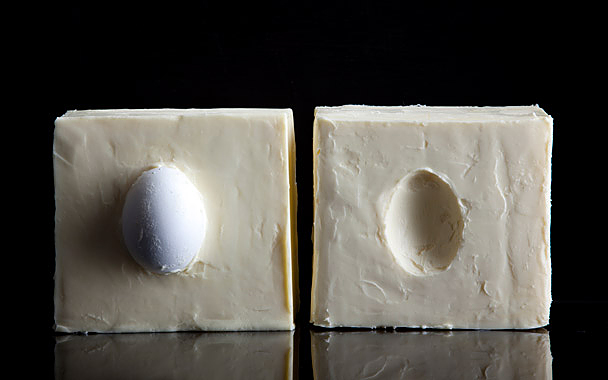Most people over a certain age in rural Ireland recall life before electricity. My neighbors in rural County Cork remember baking soda bread in a bastible (basically a Dutch oven) over an open fire, and making beestings pancakes from colostrum (the milk a cow makes just after birthing). They remember dusting the house with a wing feather left over from the Christmas goose (it keeps for months) and sprinkling primroses on the threshold of the dairy for “butter luck.” Some of them even remember making buttered eggs, an idiosyncratic tradition that could only come from a place like Cork, which for much of the 18th and 19th centuries served as the British Empire’s butter command center.
During the Lenten egg kibosh, farm wives would station their children by the henhouse door, waiting for the telltale clucking that signaled a newly laid egg. The egg, still warm, was stolen from the hen and massaged in buttery hands. The butter seeped into the porous shell, acting as a barrier against air and thus preserving the egg for several months, or at least until the Easter Sunday egg buffet. It also allegedly lent the egg a subtle buttery flavor.
Cork’s cavernous, archaic English Market still does a decent trade in buttered eggs, but making your own involves just two ingredients: butter and a laying hen. Which is how I found myself squatting a corner of my local henhouse at the crack of dawn, butter solidifying on my cold hands, while the hens around me decried my presence with loud cackles, refusing to lay. Eventually, I left with six warm eggs—swiped from underneath feathery bottoms and hastily buttered—and plenty of peck marks on my arms. Fair enough, ladies.
I sat down to eat with Peter Foynes, who runs the Cork Butter Museum, and Madge Ahern, who remembers buttering eggs as a child (and now happens to live on the old Butter Road, over which Cork and Kerry farmers used to trundle their products to the Butter Exchange for weighing, grading, and sale). After a few weeks, the eggs still tasted gloriously fresh. They had a slightly curdlike texture, the white pulling away from the shell in silky ribbons. And—was it our imagination, or was it really there?—they had a faint taste of butter. “If you really want to do it properly,” Ahern said, “churn your own butter next time.”



 Pinterest
Pinterest


